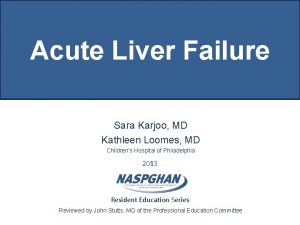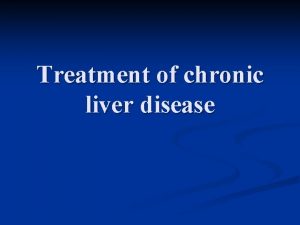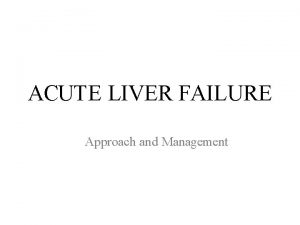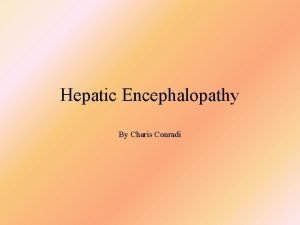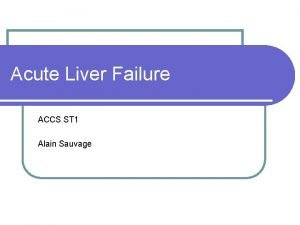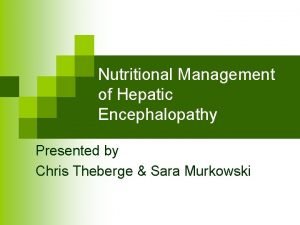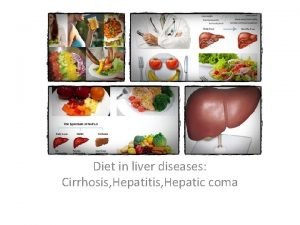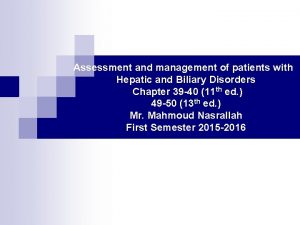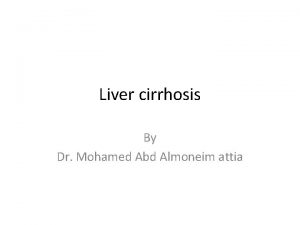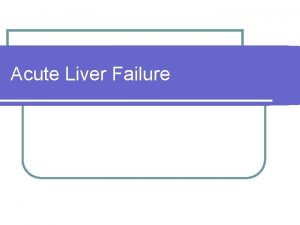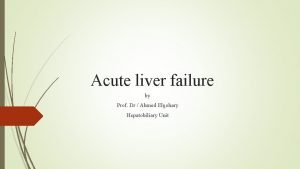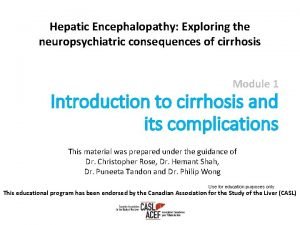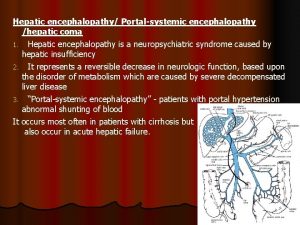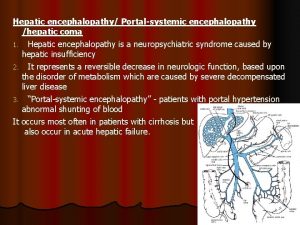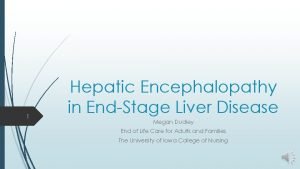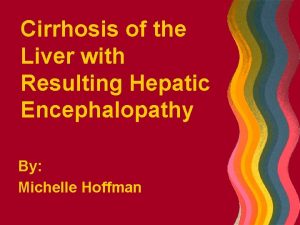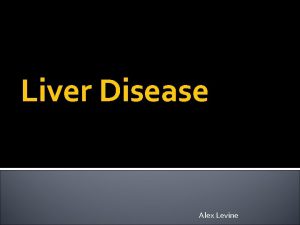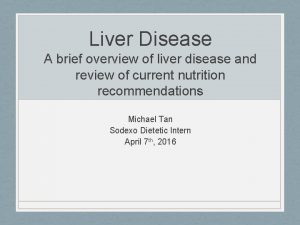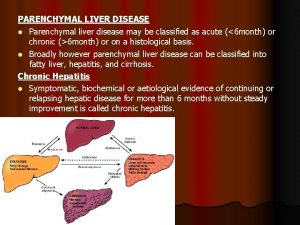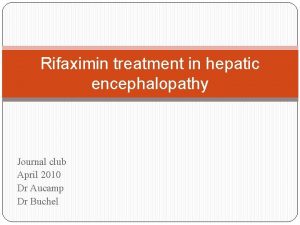Hepatic Encephalopathy App for Liver Disease HEALD A












- Slides: 12

Hepatic Encephalopathy App for Liver Disease (HEALD) A Passive Monitoring Tool to Prevent HE Readmissions for Patients with Cirrhosis December 5 th, 2019, Idea 2 Global Commencement Xing Li, MD, MBA Thomas Wang, MD Department of Internal Medicine, Hepatology and Liver Center Massachusetts General Hospital, Boston, MA

Hepatic encephalopathy (HE) is a highly prevalent, disabling and costly problem in the US HE is neurocognitive decline resulting from liver dysfunction 600 K people with cirrhosis in the US; 70% will develop HE >115 K admissions per year due to HE 1 >$7 billion healthcare charges 1 1. Stephanova M. , Mishra A. , Venkatesan, C. , et al. In-hospital mortality and economic burden associated with hepatic encephalopathy in the United States from 2005 to 2009. Clinical Gastroenterology and Hepatology. 2012; 10(9): 1034 -41.

The average HE patient journey – meet Joe who is 48 and has cirrhosis • Seen in liver clinic doing better • Meds decreased • Hospitalized for 1 week for HE • Discharged with meds • Self-stopped meds due to side effects • Started to become more confused With proper monitoring, re-admission is preventable • Seen in clinic but due to severity of HE, sent to ED • Hospitalized for 5 days for HE • Discharged with additional meds

HE is slow and progressive, but can be reversible if caught and treated early Home Hospital +/ICU Hospital Coma OURpreventable FOCUS ~46, 000 HE-related hospital readmissions occur per year costing the healthcare system ~$2 billion, mostly from delayed recognition. There is a clear unmet need to catch HE flares early. Time Covert Stages 1 Minimal • No visible symptoms Overt • • Attention and sleep disturbances 2 Confusion, slow speech, tremors 3 • Marked confusion and somnolence 4 • Complete unresponsiveness

Outpatient monitoring and medication titration can lead to fewer re-admissions and improve patient outcomes Intended benefits Side effects

Currently there is a not a way to practically monitor patient symptoms to prevent hospital re-admissions Current clinical practice for HE Diagnostics for early HE limited Other budding tools

We propose an app-linked wristwatch tool to monitor progression of HE at home and catch flares early Tracks sleep and movement patterns Passive monitoring by wearing the device Utilizes machine-learning algorithm to predict worsening of HE and alert clinicians and patients/families

The app will allow patients to visualize trend of HE, and will trigger alerts to providers to prompt intervention Patient/Caretaker Provider (MD, RN) Daily summary of sleep and movement data Trend of HE progression Alert to notify provider Alert to prompt outreach/action

We conducted clinician interviews, patient surveys and chart reviews to validate our unmet need Clinician interviews: Interviewed a dozen clinicians, who uniformly recognized unmet need, and thought idea was likely clinically impactful in improving outcomes and reducing readmissions Patient surveys: surveyed 50 patients with cirrhosis, 64% already utilize smartphone to manage disease Chart reviews: reviewed 50 patients admitted to MGH within 3 months for HE, about 40% preventable

Short-term strategy Apply for grants: Institutional and society grants Design and Conduct Pilot study: • Proof-of-concept study for small number of patients • Apple i. Watch with Research. Kit platform File intellectual property Develop commercial strategy

Team Cofounders: Thomas Wang, MD – clinician, expertise in research design/implementation and innovative technology Xing Li, MD, MBA – clinician, business and financial strategy Current advisors: Jason Tucker–Schwartz – strategy, idea 2 advisor Claire Zhao – machine-learning, idea 2 advisor Raymond Chung, MD – clinical, MGH liver department chair Nneka Ufere, MD – clinical, MGH liver fellow

Hepatic Encephalopathy App for Liver Disease (HEALD) A Passive Monitoring Tool to Prevent HE Readmissions for Patients with Cirrhosis Thank you for listening! Xing Li, MD, MBA, xli 70@partners. org Thomas Wang, MD, twang 16@partners. og
 Hepatic encephalopathy stages
Hepatic encephalopathy stages Hepatic encephalopathy pathophysiology
Hepatic encephalopathy pathophysiology Hepatic encephalopathy staging
Hepatic encephalopathy staging Encephalopathy stages
Encephalopathy stages Acute liver failure criteria
Acute liver failure criteria Stages of hepatic encephalopathy
Stages of hepatic encephalopathy Types of cirrhosis
Types of cirrhosis Post hepatic jaundice
Post hepatic jaundice Encephalopathy stages
Encephalopathy stages Transaminitis definition
Transaminitis definition Posology formula
Posology formula J'overt
J'overt Encephalopathy liver
Encephalopathy liver
